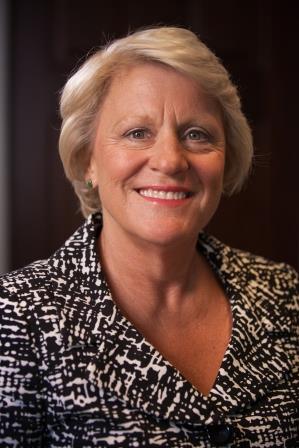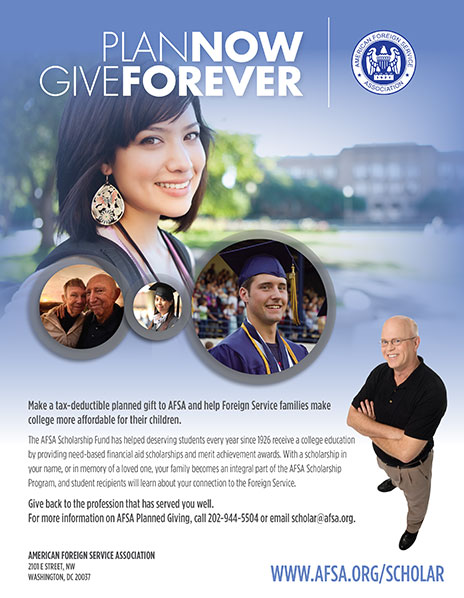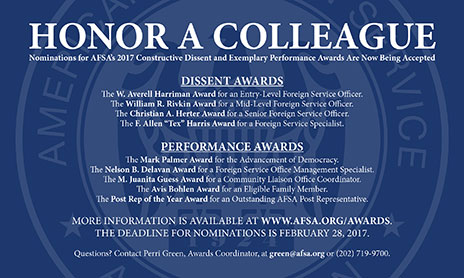Forging Strategic Partnerships
President's Views
BY BARBARA STEPHENSON

As I write on Labor Day, the summer rotation cycle is behind us and, in our household and many of yours, a new school year is beginning. This seems like a great time to provide an update on the progress we have made over recent months establishing and cementing a series of strategic partnerships that form the foundation of AFSA’s outreach efforts.
I know from conversations with members that many of us dream of earning the national recognition and respect our colleagues in the military enjoy. That remains a long-term goal for the Foreign Service, but we must work toward that goal with clear eyes.
Our numbers are small (just 16,500 active-duty FS, compared to well over a million active-duty uniformed military and another half-million reserves) and our financial resources are limited.
We generally spend more than two-thirds of our careers serving abroad, so ties to our home states grow tenuous; and we have nothing like the military’s network of bases across the country to keep us connected.
If we are going to make serious progress toward our goal of having the Foreign Service widely recognized and respected, we need friends and partners with deep roots in their communities to influence elected representatives. We are developing a comprehensive 50-state strategy to engage with the American public, especially those prepared to vouch for the value of the Foreign Service, in every state.
AFSA has been working quietly and diligently over a number of months to forge strategic partnerships, so we can tap into nationwide networks to amplify the story of the Foreign Service to an ever-wider audience around the country. For example, following successful joint outreach with AFSA in 2015, Global Ties, which hosts international visitors across the country, has invited me to join its advisory board, connecting AFSA to its globally engaged members and affiliates in 45 states.
We are developing a comprehensive 50-state strategy to engage with the American public.
The World Affairs Councils of America, with local councils in 40 states, has given AFSA a prime speaking slot at its annual conference in November. And after a successful pilot year, the U.S. Institute of Peace signed on to partner with AFSA again on our signature high school essay contest.
Outreach is, of course, only one of the three pillars in the AFSA Governing Board’s work plan, alongside comprehensive workforce planning to ensure you have a healthy career path to develop into the leaders of tomorrow and inreach to help us gain a nuanced understanding of your aspirations and concerns.
AFSA has also secured much-needed—and much-appreciated—funding for additional outreach initiatives. During the last three months, AFSA signed agreements for funding in excess of $85,000 to sustain outreach efforts.
Work continues on all three pillars. “Structured conversations” with members resume this month as we begin hearing from USAID and specialists at State, informing AFSA’s advocacy work with both management and Congress. We hear you loud and clear, for example, on lateral entry, and we will continue to oppose efforts in Congress to parachute new entrants into State’s already full mid-levels, even as we work constructively to address the staffing shortages at entry level.
In our mission to advocate for a strong Foreign Service, we’ve formed a strategic partnership with the Lyndon B. Johnson School of Public Affairs at the University of Texas at Austin to conduct a benchmarking exercise comparing the U.S. Foreign Service with eight of the largest, most influential diplomatic services in the world.
We aim to capture global best practices on recruiting, early assignment patterns, tour length and a number of other issues for the purpose of making recommendations to ensure the U.S. Foreign Service is equipped to lead America’s foreign policy in the 21st century. Expect to hear more over the course of the next few months as AFSA’s work with the LBJ School’s 14 graduate students and two respected international affairs scholars and practitioners progresses.



